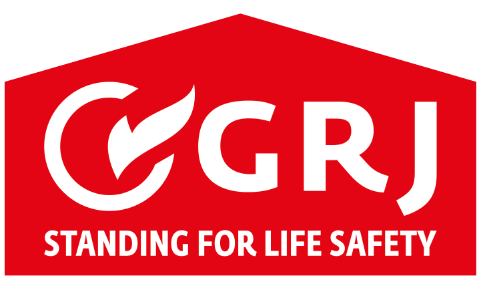Latest in Fire Safety Regulations for Landlords
Posted on 14th March 2023
Fire safety regulations for landlords are changing almost constantly to ensure all buildings of multiple occupants are safe for occupants and visitors. Staying on top of all the fire safety regulations is essential as a landlord, whether for commercial or residential buildings, in order to make sure your building is compliant and doesn’t pose a hazard.
In this article we will be looking at the latest changes in fire safety regulations and give you a rundown of the responsibilities of landlords in commercial and multi-occupant residential buildings.
Who is Responsible for Fire Safety in Buildings with Multiple Occupants?
In commercial properties, fire safety is the duty of the ‘responsible person’. A responsible person is defined as the landlord, owner, employer or any other person with control of the premises.
In residential buildings of multiple occupants, the landlord or freehold owner has the legal obligation to ensure fire risk assessments are carried out and fire risks are identified and reduced.

What are the Current Fire Safety Regulations for Landlords?
If you are responsible for a commercial or residential property with multiple occupants in the UK, then you have the legal obligation to ensure the building is safe for all occupants and visitors and protected in the event of a fire.
According to the current fire safety regulations you must carry out regular fire risk assessments and make sure there are adequate fire protection measures in place such as passive fire protection or fire doors. These also have to be regularly surveyed and maintained by qualified and competent experts. Failing to do so will result in heavy punishments such as fines and in extreme cases even imprisonment.
The requirements for fire safety in England and Wales are covered mainly by The Regulatory Reform (Fire Safety) Order 2005.
What are the Up-to-Date Fire Safety Regulations?
The latest amendments in The Regulatory Reform (Fire Safety) Order include the Fire Safety Act of 2021 which came into force on 16 May 2022 in England followed the Fire Safety (England) Regulations 2022 that came into effect on 23 January 2023.
Fire Safety Act 2021
The Fire Safety Act was created with the aim to clarify the extension of the Regulatory Reform (Fire Safety) Order 2003. The reform applies to all commercial buildings, multi-office buildings, public places and the common parts of residential buildings with multiple occupiers, however, there has been some confusion with the extent of the FSO regarding shared areas in multi-occupied residential buildings.
The Fire Safety Act 2021 confirms that in shared areas of residential buildings, the Fire Safety Order applies to the building structure and external walls, including cladding and balconies, as well as the entrances of individual flats where the doors are between the domestic and common peremesis.
The regulations require Responsible Persons to carry out fire safety assessments and ensure the aforementioned elements are included in the inspection.
Fire Safety (England) Regulations 2022

The second big change in fire safety rules - the Fire Safety (England) Regulations 2022, came into effect only recently on 23 January 2023 and it highlighted additional changes in residential and commercial landlords’ fire safety responsibilities.
The main reason for these regulations is improving fire safety in high-rise residential buildings by implementing the recommendations made in thePhase 1 report of the Grenfell Tower enquiry.
The new regulations, that are now in force in England, outline new responsibilities that the Responsible Person of a multi-occupied residential building needs to carry out depending on the height of the building.
In multi-occupied residential properties that are at least 18 metres in height or seven or more storeys, the landlord or other Responsible person is required to do the following:
Provide the local fire services with electronic copies of the building’s floor plans and also keep hard copies of those in a secure information box that can be accessed by firefighters.
Provide fire and rescue services with information regarding the external wall system of the building and if there are material changes to the walls provide an update.
Perform monthly checks on all fire and evacuation lifts, as well as other fire protection equipment on the premises and if any of those are out of order for longer then 24 hours inform the fire and rescue services.
Install a secure information box on the premises that contains the names and up-to-date contact details of the responsible person as well as up-to-date physical copies of the floor plans.
Install wayfinding signs in the stairwells that are visible in low light conditions and show flat and floor numbers.
In multi-occupied buildings that exceed 11 metres in height the Responsible Person is required to:
Carry out quarterly inspections on all fire doors in communal areas and annual inspections on doors that are flat entrances.
Responsible Persons in all multi-occupied residential buildings with shared areas are also required to provide tenants with fire safety instructions and relevant fire safety information about fire doors.
Upcoming Changes to the Regulations
From the 1st of October 2023, new changes are coming to the current regulations. The updated regulations will fall under section 156 of the Building Safety Act 2022. It is expected to introduce several amendments aimed at enhancing the safety in all buildings the regulations apply to.
Named Phase 3 of the Fire Safety Reform Programme, this amendment expands upon the previous ones, namely the Fire Safety Act 2021 and Fire Safety (England) Regulations 2022.

Ensure Your Building is Fire Safety Compliant with GRJ Surveying
Are you a landlord or building developer concerned about the fire safety of your building? GRJ Surveying can help. Our experienced team carries out passive fire protection surveys including complete compartmentation surveys, fire wall surveys or structural steel fire protection surveys. Following a full inspection of your building we’ll provide you with a report of our findings that can help you determine if your building is compliant with the regulations. If any additional steps are required we can also provide advice and offer remedial work.
To book a survey of your commercial property, speak to our team or fill out the form below!
REQUEST A QUOTE
For more information about our services, please fill in the form below and a member of our team will be in touch.
Share this post:















